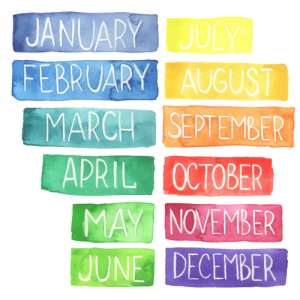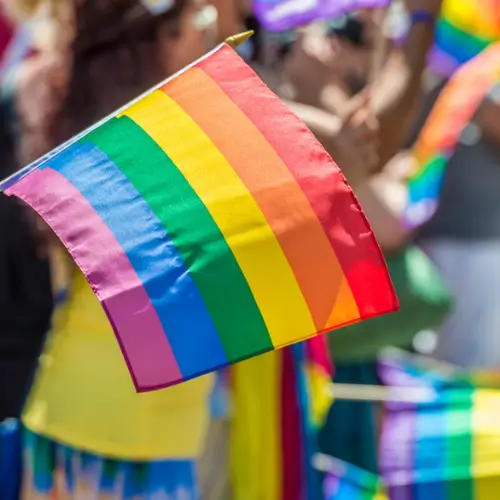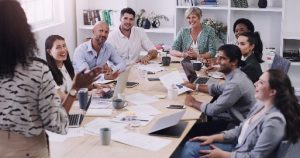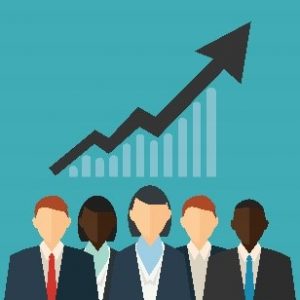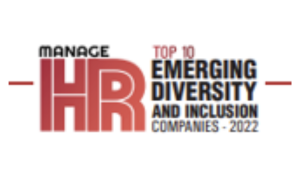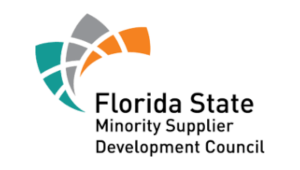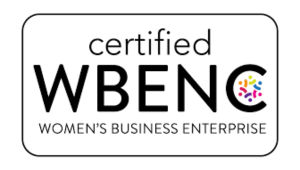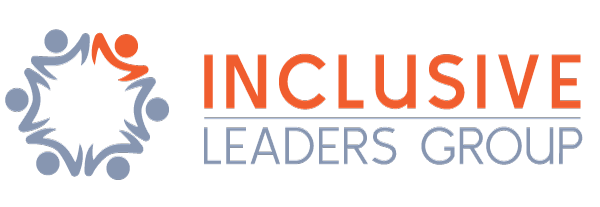More than 53 percent of LGBTQ workers hide their identity at the workplace, often citing a persistent feeling of being unwelcome. This identity struggle has detrimental impacts on their health, happiness, and productivity, in addition to businesses’ talent retention and leadership development.
As we join in the global recognition and celebration of Pride Month – in tribute to those involved in the Stonewall Riots — Inclusive Leaders Group interviewed ILG Consultant Zander Keig as a part of our continuous learning, relationship building, and celebration of the LGBTQ community. (If you’re looking for impactful ways for your company to celebrate this month — and beyond, check out what other organizations have done).
Coast Guard Veteran Zander Keig, MS, MSW, LCSW, is the National Association of Social Workers Social Worker of the Year. Keig has devoted his entire career to promoting the dignity and health of people who are transgender, living with a mental illness, or serving in our nation’s military. He is an Inclusive Leaders Group Consultant for LGBTQ+ Inclusion and Belonging, as well as normalizing and navigating mental health within a diversity and inclusion strategy. Keig is also a proud transgender man.
Some of our interview questions focused on the June 2020 report from Boston Consulting Group (BCG) entitled A New LGBTQ Workforce Has Arrived—Inclusive Cultures Must Follow. Together, BCG and New York City’s Lesbian, Gay, Bisexual & Transgender Community Center, a nonprofit service and advocacy organization, surveyed 2,000 LGBTQ employees and 2,000 non-LGBTQ (straight) employees across the US. The goal was to understand the experiences of today’s LGBTQ workforce and how companies can create more inclusive workplaces. The results show that despite significant investment and decades of hard work, organizations still need to do more.

The Inclusive Enterprise Blog Interview
- Zander, you’ve been an award-winning, LGBTQ-focused advocate, educator, and community organizer for over 33 years. What drew you to LGBTQ DEI work? Where did this passion come from?
When I was 20 years old, I was in the coast guard during the pre “don’t ask, don’t tell” period. You kept that hidden then, you were thrown out if you were discovered to be gay or lesbian, so I decided I was going to follow the rules. I didn’t participate in any Gay and Lesbian community events. Once I was out of the military, I decided to really get involved because I could. Having the opportunity, I got involved with the Gay Youth Alliance. I was invited to serve on a panel for a graduate level psychology class at the University of California – San Diego. It was my first experience (being lesbian at the time, I am a trans man now) having people ask me questions about my life experience. I am almost 55 now. I enjoy doing these events and have not stopped since.
- The BCG research identified two central trends. First, the makeup of the LGBTQ workforce has changed dramatically, highlighting the need to evolve traditional approaches to D&I. Second, young straight employees are increasingly attuned to LGBTQ issues, signaling a much larger audience who cares about inclusion. What do you perceive as the most important takeaway of these trends for corporate D&I workplace leaders and practitioners?
Well, I really have problems with this research. They left out an entire generation (mine, GenX). They focused on Boomers and Millennials. I would love to see how the results would have looked if GenX were included. Most were squeezed out due to downsizing and outsourcing. The article says Gen Z and Millennial care deeply and are more likely to advocate than previous generations. I don’t think that’s accurate. There were so many LGBTQ ERG groups and domestic partner policies that were advanced around the country and started because of Boomers and GenX. We would not have had this progress if it hadn’t been for Boomers and GenX, who also care deeply.
- What does the term Intersectionality mean to you, and why is it important that effective D&I strategies for LGBTQ and other underrepresented employees must be grounded in intersectionality today?
When people can show up to work without having a burden. They freely share what they did over the weekend. There are people for so long felt they couldn’t talk about that even though they could change the sex of the person they did things with, what if they misspoke and were ‘found out.” If people were just allowed to “be” and talk about ALL their identity and sexual orientation, gender identity, race, or ethnicity they are more productive. Ex: I have ADHD, neuro divergency, and I am care giver to my father. All those things matter, to people, and I am impacted by society. Imagine how Matthew Shepard’s incident impacted young gay men in their 20s; just that fear, to then go to work, school with fear in the pit of their stomach. Like last year, how were black employees impacted by George Floyd situation? If we’re carrying around a lot of stress, it impacts and disrupts our productivity. It’s dollars and cents. Workforce performance is impacted, and that is very costly.
- BCG recommends that leaders shift their focus from D&I policies and formal programs to culture to address an employee’s “1,000 daily touch points.” What are these 1000 touch points that BCG refers to? What should that shift in D&I focus look like?
We’re interacting with everyone throughout our day, whether it’s a customer, client, colleague, or vendors via email, phone or other platforms or in person. I am a big fan of the attention being on cultural and linguistic appropriateness competency. Which terms do you use? Like LatinX which is not good to use, often misunderstood and even offensive to many. There are professionally trained people who provide cultural competency training: How do you talk to and about each other? What do our forms and documents say? We need to speak so we are inclusive. To me it’s the gap between the D&I policy versus the inclusion practice. Having a table of people who look different but think the same, is not the goal. Like brainstorming, you want more people with different thoughts to get expansive ideas for better solutions at the end of a session.
- This interview is during late April 2021, May is Mental Health Awareness Month, and June is LGBTQ Pride Month. You are both a Diversity & Inclusion Consultant and Trainer, and a Wellness Coach & Facilitator. How would you describe the workplace mental health and wellness environment for LGBTQ and other underrepresented employee groups at this time?
I am impressed with the number of start-ups offering wellness or mental health or coaching benefits. Modern health, Relay, BetterUp, a lot of companies, unfortunately you have to be a large enough company to afford these benefits. I hope there are opportunities for organizations to join forces of emerging companies with services for a smaller company. In addition to the Health Care benefits, at their fingertips on their phone, people can access guided imagery apps, sleep hygiene techniques which are helpful for self-care. If we’re in distress, dealing with anxiety and mood issues, there are very successful evidence-based techniques people can employ immediately through these resources at no cost.
- What steps should companies take to address the situation to improve workplace wellness? Can we treat mental health and wellness similar to a diversity issue?
Chances are there is a large percentage of people who need mindfulness, and it is a diversity and inclusion issue when those with race, gender and disability identities are suffering from mental health challenges. It’s important to be proactive. We need to normalize that the body has an automatic response to stress. Fight, flight, freeze or fawn. The endocrine system does what it’s supposed to do, it sends signals to our muscles to tighten, and digestion slows down. We don’t want the mind to not trigger those signals. We want our body to respond to stress. The problem is people are living with long term stressful situations, causing problems with medical, mental, and emotional health. It’s not good to have stress and strain in your muscles. Your blood flow is constricted and when you’re not getting nutrients and oxygen to your organs including your brain, that’s not good. We don’t want zero stress, without it we would not be able to walk, bones are destabilized requiring physical therapy.
Emotional and Mental wellness is just as beneficial as bringing in chair massage or fitness center. We exercise our bodies and our mind. When we’re challenged with negative thoughts like self-criticism there are techniques to help with that. If we are anxious, there are techniques or medication. We don’t have to be a victim of our emotions and to our moods.
Inclusive Leaders Group LGBTQ Inclusion Education and Training Solutions
Organizations are becoming increasingly diverse. Yet hiring diverse talent — taking into consideration characteristics including but not limited to race, ethnicity, gender, age, religion, ability, and sexual orientation — is only the first step in creating an inclusive organization. It is essential for leaders to be able to create inclusive environments so that everyone is able to fully engage in the work. Inclusive Leaders Group provides research-based custom and tailored DEI training that develops inclusive leaders and builds a culture of inclusion and engagement.
Zander and the other talented members of the ILG Consulting team also deliver tailored communication for organizational meetings, conferences, and town halls through ILG DEI Speaking Engagements.
There is opportunity to celebrate Pride all year round in 2021. Here is an updated calendar of all notable LGBTQ awareness periods in 2021, including important Days of Visibility, Pride Weeks, and Remembrance Days.
